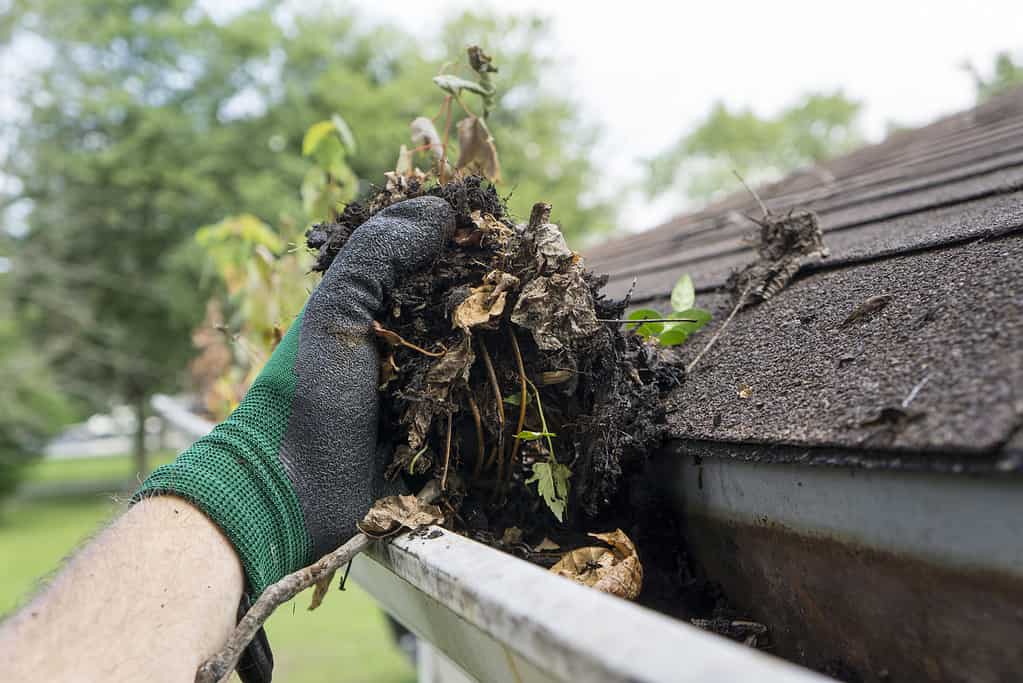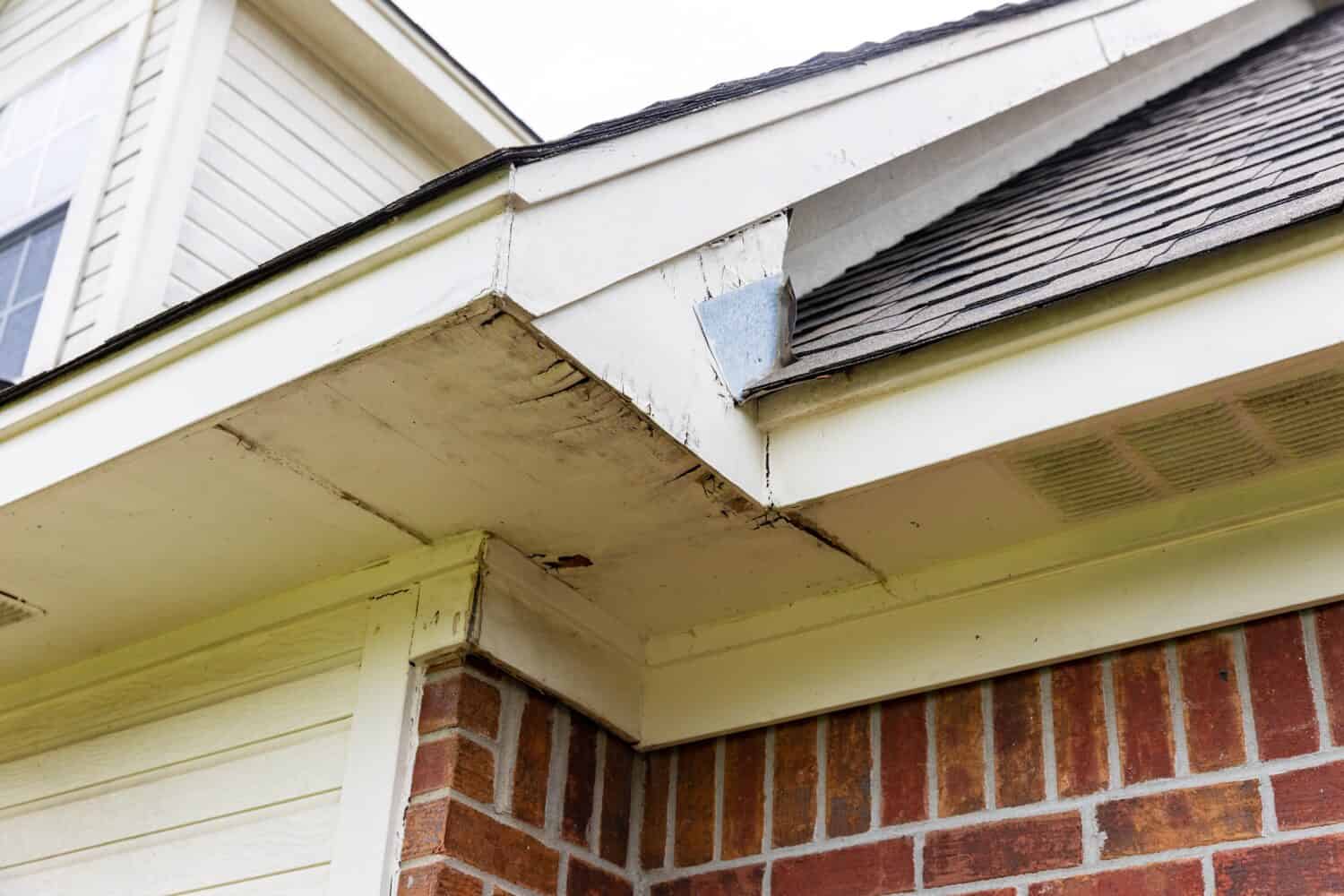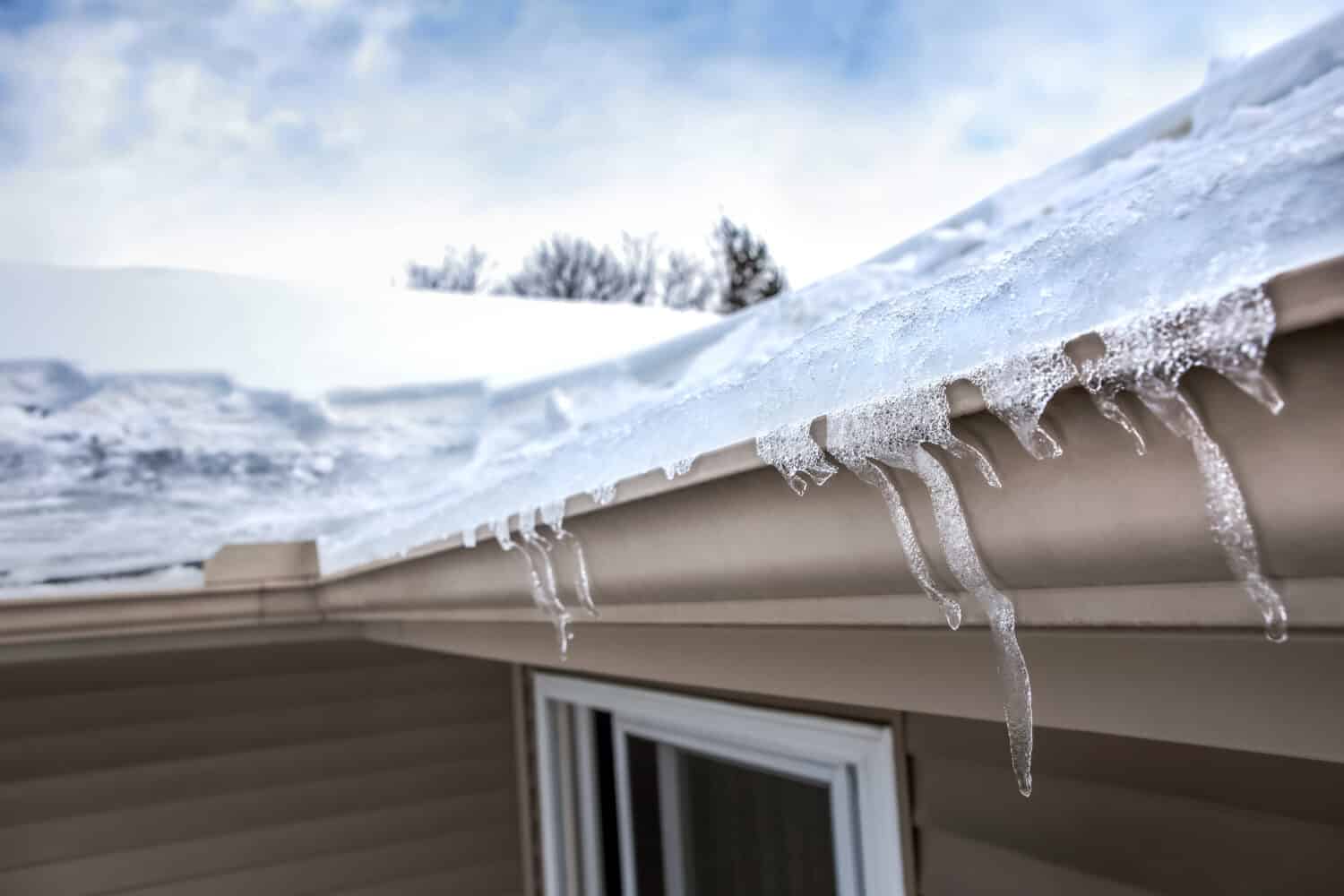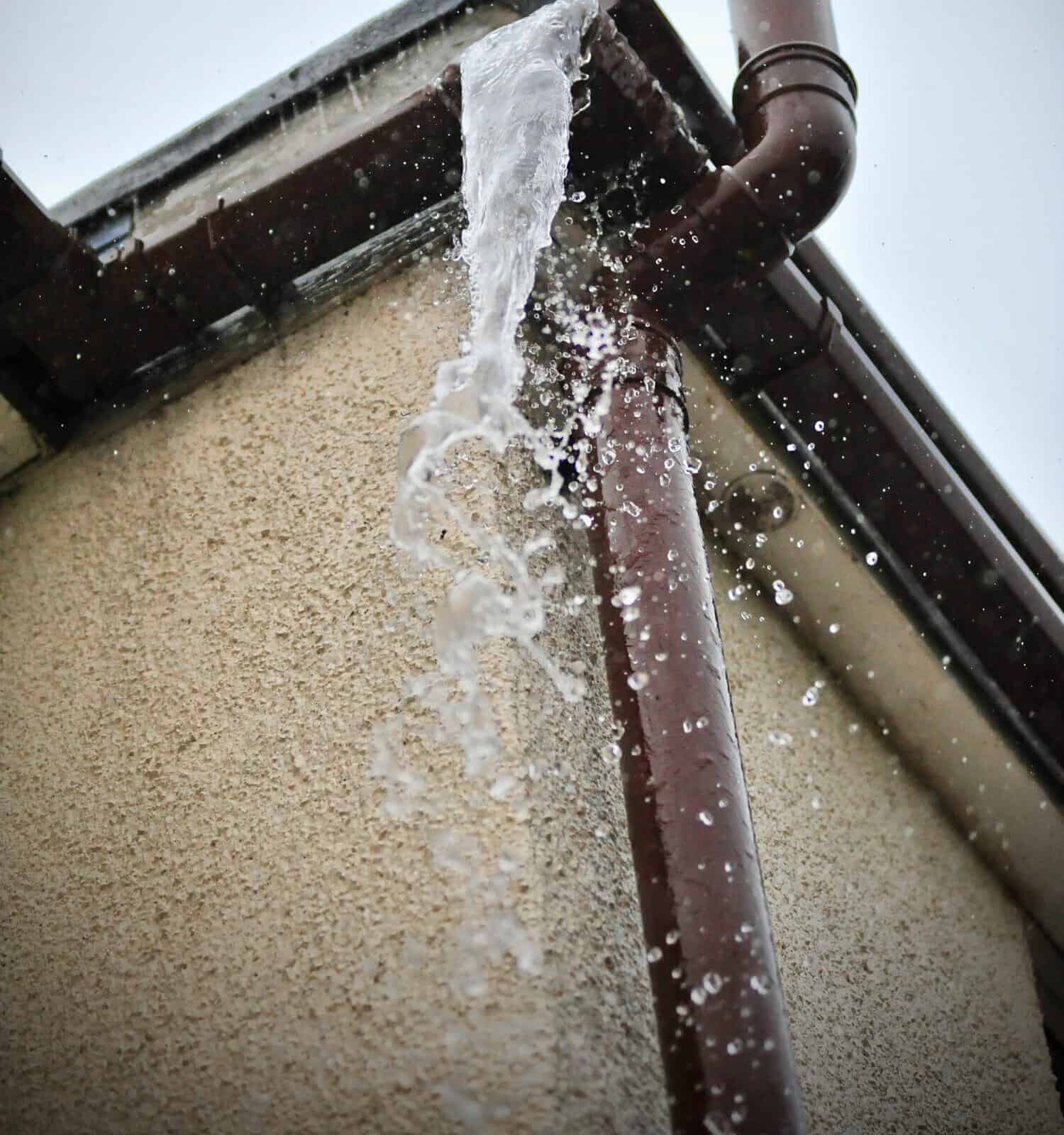Gutters may not be the most appealing aspect of your home, but they do serve a vital purpose in safeguarding your property against water damage. Functioning gutters ensure that rainwater is directed away from foundation walls and roofing, preventing the need for repairs and structural complications. However, failing to maintain your gutters by either not clearing out leaves or replacing leaking parts of broken gutters may result in issues. Read on as you will discover the most common types of gutter problems and a guideline on how to address these issues proactively before disaster strikes.
Common Gutter Problems
1. Blocked gutters

A build-up of leaves, dirt, and debris can prevent water from properly flowing in your gutters.
©iStock.com/IndyEdge
When leaves and dirt build up in the gutters, it creates blockages in the flow of water. Therefore, it results in water overflowing, which causes damage to your home’s foundation and roof structure.
How to fix blocked gutters: To prevent your gutters from clogging, it’s recommended to clean them twice a year. If a lot of trees surround your home, it’s time to grab your ladder and gutter scoop to remove any stagnant build-up hanging about.
Once you’re done cleaning, flush out each gutter with water to ensure you clean out any remaining debris. In addition, to prevent the accumulation of leaves and bird nests in your gutters, consider installing gutter guards or screens.
2. Broken and leaking gutters

To address leaking gutters, apply some sealant on exposed areas.
©Carolyn Hutchins/Shutterstock.com
Leaking gutters cause rust and corrosion around gutter seams. Over time, as these leaks start to develop, they will display unsightly water stains on the exterior of your home, causing long-term structural damage.
How to fix damaged gutters: To address leaks, apply some sealant on exposed areas. If there is rust or corrosion present, it may be necessary to replace parts of the gutter that are beyond repair. Conducting inspections and ensuring proper maintenance can help identify and fix any leaks that further arise.
3. Joint Separation

Wear and tear or faulty installation can result in joint separation on your gutter.
©Benedek Alpar/Shutterstock.com
Sometimes, water can leak around the seams of gutter joints. These joints become separated due to either wear and tear or incorrect installation. Therefore, joint separation gives rise to common gutter problems.
How to fix gutter joint separation: If you notice gaps in your gutters, make use of a sealant that is made specifically for gutters to seal up separated joints. However, if the gaps are too wide and brittle, replace broken parts and reattach new gutters to existing gutters. Moreover, if you struggle with home renovations, get help from a professional to thoroughly inspect and fix the issue.
4. Droopy gutters

Water can accumulate in specific areas if you have droopy gutters.
©Cameron Trent Way/Shutterstock.com
Droopy gutters can interfere with the flow of water, leading to its accumulation in specific areas of the gutter. Because of this, excess water hanging about could damage the structure of your home, tearing pieces of the foundation away.
How to fix droopy gutters: Reattach sagging gutters using gutter brackets or thick cable ties. Ensure they are securely fastened to the fascia board for proper support. In addition, if your gutters continue to droop, consider seeking professional help for quick and safe repair.
5. Incorrect gutter slope

Gutters need a proper slope to ensure the collected water flows freely and in the right direction.
©Emagnetic/Shutterstock.com
Angled gutters are essential to ensure that water flows towards the downspouts. If the slope is insufficient, it can result in water pooling and overflowing in areas.
How to fix gutter slopes: To achieve the desired slope, you can adjust the position of the gutter hangers. It is recommended to have a slope of 1/4 inch for every 10 feet of gutter length. Furthermore, use a level to make sure that everything is properly aligned and balanced, which will ensure free flow drainage of water.
6. Rotting fascia

A clogged or damaged gutter can cause the fascia to deteriorate from water damage.
©Chad Robertson Media/Shutterstock.com
When fascia boards start to decay, it is typically due to water damage, which is often caused by problems with the gutters. If the gutters are clogged or damaged, water can seep into the fascia, causing it to deteriorate gradually over time.
How to fix rotting fascia: Carefully detach the sections that are rotten using a pry bar or chisel. Additionally, inspect the rafters to identify any structural damage. Then, align and secure the gutters to the fascia using brackets, ensuring that they are sloped correctly for effective water drainage.
7. Ice dams

Ice dams often develop at the edge of rooftops in colder regions.
©Suzanne Tucker/Shutterstock.com
In regions that have colder weather, ice dams develop at the edge of rooftops. This can result in water seeping into one’s home, damaging both the roof and the inner interior of your living area.
How to fix ice dams: To prevent the formation of ice dams, enhance the insulation and ventilation in your attic. Also, consider installing heat cables along roof panels to effectively melt snow and chunks of ice.
8. Gutter overflow

Your gutters should be the proper size and width to handle your roof’s drainage requirements.
©LifeThroughtALens/Shutterstock.com
Heavy rainfall causes the gutters of your home to become overfilled and flooded. When overflow happens, this leads to water damage affecting your home’s foundation, landscaping, and exterior.
How to fix gutter overflow: Make sure that your gutters are the appropriate size and width to handle the drainage requirements of your roof. It’s important to clean and maintain your gutters to avoid any blockages that cause overflow. If you do experience heavy rains, add downspouts for smooth water flow.
In Conclusion
Caring for common gutter problems can help avoid expensive repairs and protect your home from disasters. In addition, conduct regular inspections and upkeep maintenance to ensure your gutter system works effectively.
The photo featured at the top of this post is © ronstik/Shutterstock.com
Thank you for reading! Have some feedback for us? Contact the AZ Animals editorial team.







